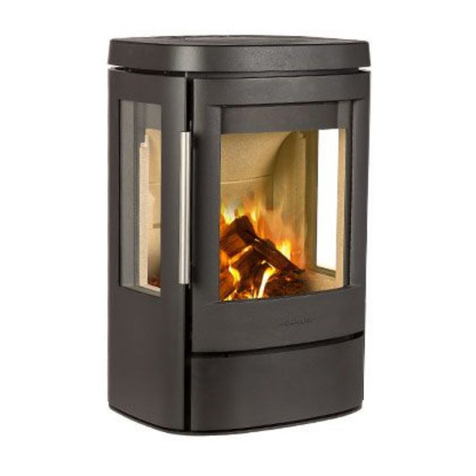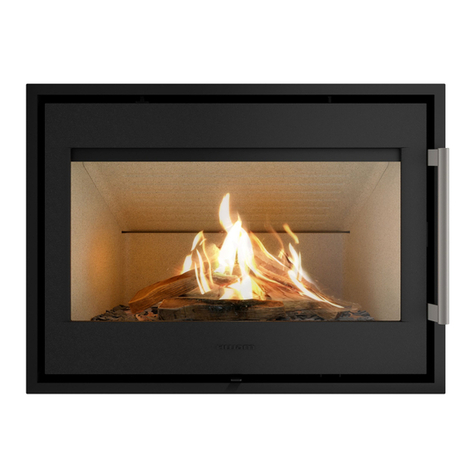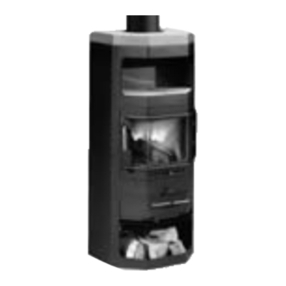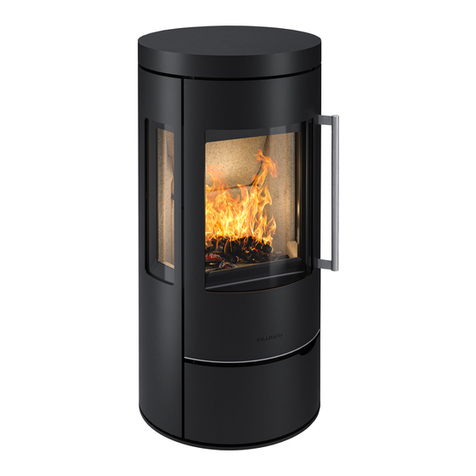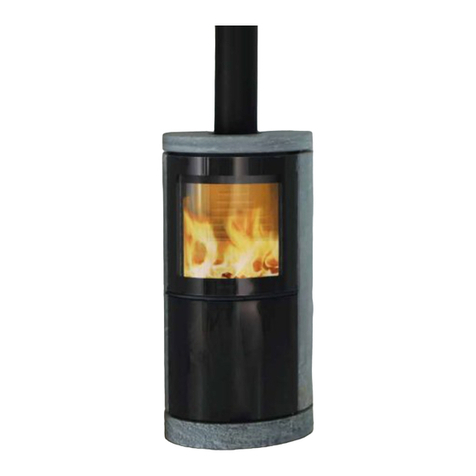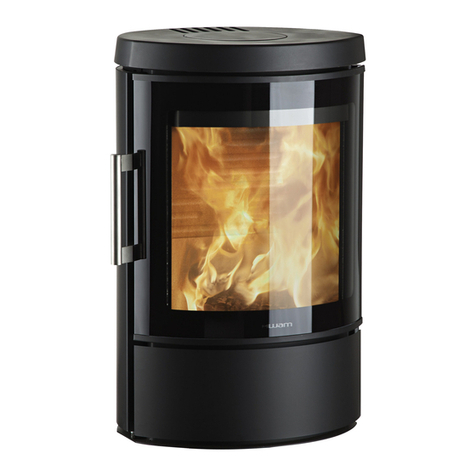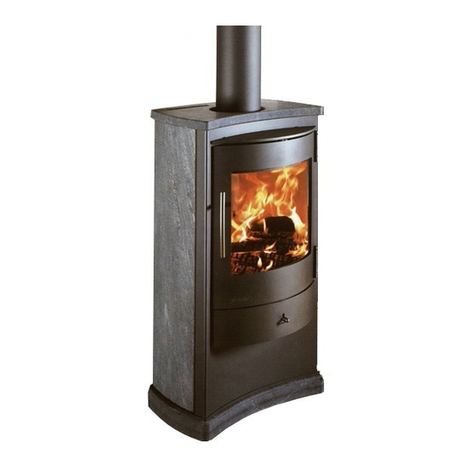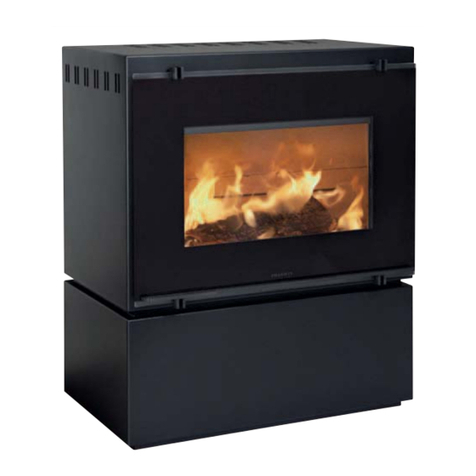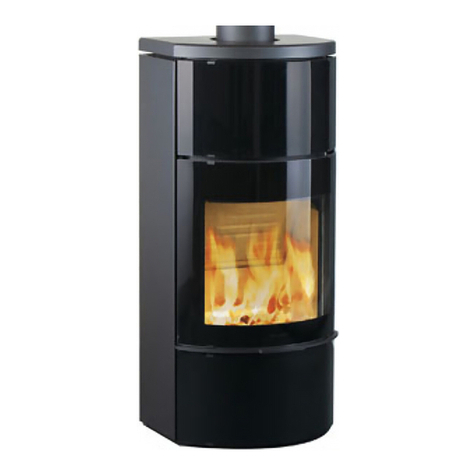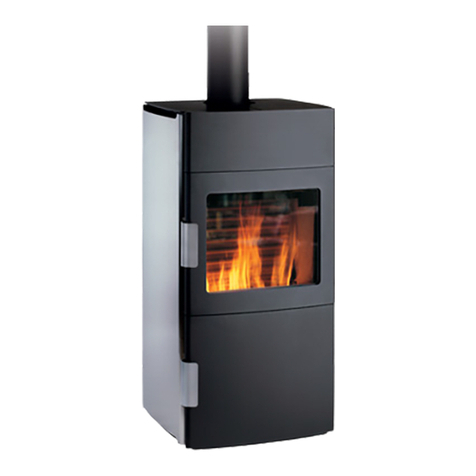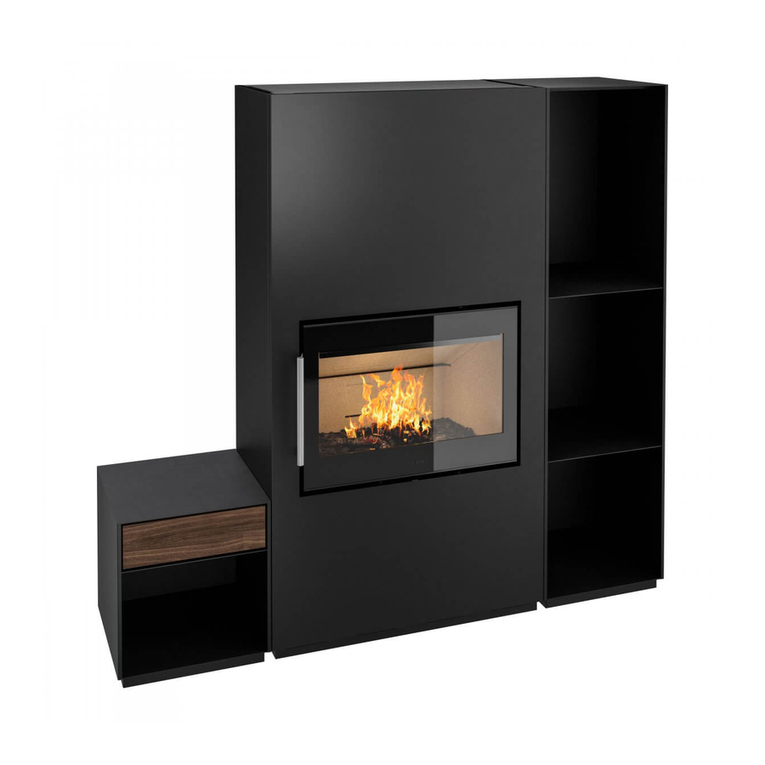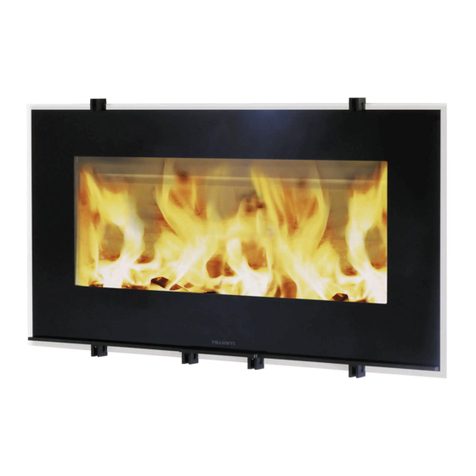
Page 10 of 20 pages
• Brick-built jamb of flue (11).
• Built-in pipe sleeve (12). Fits smoke flue.
• Wall rosette (13). Covers disruption to wall around pipe sleeve.
• Joint (14). Sealed with gasket.
• Smoke outlets (15) of the HWAM stove.
• Smoke flue regulating damper (16).
• Soot door (17).
Fitting the loose parts
Before the stove is installed,you must ensure that all loose parts are fitted correctly. Check that all insula-
tion plates of the combustion chamber have been properly placed, i.e.that the bottom plate is horizontal
and that the side plates are vertical and reach all the way up to the steel sides of the combustion chamber
and down to the bottom plate.
Vertical cross-section of the stoves (Drawing B):
• The smoke shelf (5).To be placed on top of the steel rail and on the holders in the sides.
• Two-piece smoke defector plate (6).Each half is hung on the hooks located beneath the top plate.The two
halves join in the holders behind the air pipe. Once the stove has been installed, twist the protection off
the two hooks by using pliers or a screwdriver.
• Removable rear plate (2), covering Autopilot controls. This must always be mounted if the stove is
placed next to a combustible wall.
• Loose heat shield (8) under the ash pan.This can be used as a lid when the ash pan is removed for
emptying.This must always be mounted when the stove is burning
Chimney
The chimney is the “engine” of the stove and it is crucial for the functioning of the woodburning stove.
The chimney draft provides a partial vacuum in the stove.This vacuum removes the smoke from the stove,
sucks air through the dampers for the so-called glass pane rinse which keeps the glass free of soot, and
sucks in air through both primary and secondary dampers for the combustion.
The chimney draft is created by the differences in temperature inside and outside the chimney.The higher
the temperature within the chimney, the greater the draft. It is crucial, therefore,that the chimney is warmed
up properly before closing the damper and limiting the combustion in the stove (a brick chimney takes
longer to warm up than a steel chimney).On days where the weather and wind conditions create insufficient
draught inside the chimney, it is even more important to warm up the chimney as quickly as possible.The
trick is to quickly get some flames going. Split the wood into extra fine pieces, use an extra firelighter, etc.
If the stove has not been used for a longer period,it is important to check that the chimney pipe is not blocked.
It is possible to connect several devices to the same chimney. However, it is important to first check the
applicable rules.
Chimney sweeping
To prevent the risk of chimney fires,the chimney must be cleaned every year.The flue duct and the smoke
chamber above the baffle plate must be cleaned together with the chimney. If the chimney is too tall to
be cleaned from above, it must be equipped with a soot door.
In case of a chimney fire, close all dampers and call the firefighters. Before any further use, have the
chimney checked by the chimney sweeper.







